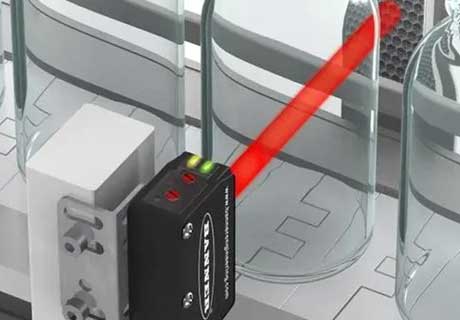Where Are Photoelectric Sensors Used?
Key Takeaway
Photoelectric sensors are used in various industries including manufacturing, logistics, and packaging. They play critical roles in automation, such as in assembly lines for product detection, in packaging systems for counting items, and in safety mechanisms for equipment operation and More
Industrial Automation Applications
In the realm of industrial automation, photoelectric sensors are indispensable. They are primarily used to streamline manufacturing processes by providing precise, non-contact detection of various objects on production lines. Whether it’s identifying the presence of a part as it passes on a conveyor belt or ensuring that machinery stops when necessary to avoid accidents, these sensors increase both safety and efficiency. Their use in industries such as automotive manufacturing, where they help in assembly line sequencing and parts verification, is particularly notable.
Automated systems rely on these sensors for accurate real-time data to optimize production flow. This not only helps in maintaining high-quality standards but also reduces waste by minimizing errors that might occur in a less automated environment.

Role in Packaging and Material Handling
Omron Photoelectric sensors play a crucial role in packaging and material handling. They ensure that items are correctly counted and sorted, which improves order fulfillment accuracy and speeds up packaging processes. In distribution centers, these sensors are used to automate the sorting of packages based on size, shape, or barcodes, significantly enhancing throughput and reducing manual labor costs.
Their ability to detect transparent and reflective materials also makes them ideal for packaging operations in the food and beverage industry, where they can ensure that safety seals are intact and that packaging is completed correctly.
Use in Logistics
In the logistics industry, photoelectric sensors streamline operations and enhance efficiency at every level. These sensors are integral in automated sorting systems, where they quickly and accurately sort packages by size, shape, and barcode, facilitating rapid processing and dispatch. They also optimize inventory management by ensuring precise counting and placement of goods, reducing errors, and improving warehouse space utilization.
Additionally, photoelectric sensors are used in loading docks to monitor and control the loading process, preventing overloading and ensuring safety compliance. Their ability to detect the exact position of goods helps in automating the loading and unloading processes, significantly reducing turnaround times and labor costs. By enhancing these key logistics operations, photoelectric sensors contribute to smoother, faster, and more cost-effective supply chain management.
Use in Food and Beverages
In the food and beverage industry, photoelectric sensors significantly enhance production efficiency and safety. They are integral in quality control processes, inspecting the presence and proper application of labels on bottles, and ensuring that containers are filled to the correct levels. During packaging, these sensors check that materials are correctly applied and that seals are intact, crucial for maintaining product freshness and preventing contamination.
Additionally, they sort products by size, color, and shape, ensuring consistency and visual appeal, which is vital for consumer satisfaction. In beverage lines, sensors manage the flow of bottles and cans to prevent jams and maintain steady production speeds. They also play a safety role by ensuring machinery guards are in place before operations commence, protecting workers from potential hazards. Overall, photoelectric sensors are essential for optimizing operations and upholding quality and safety standards in the food and beverage sector.
Emerging Innovative Applications
Looking toward the future, the applications of photoelectric sensors continue to expand into new and innovative fields. For example, in healthcare, they are being explored for non-invasive monitoring devices that can detect biometric data through changes in light absorption or reflection. Environmental monitoring also benefits from these sensors, as they can detect changes in light properties to monitor air quality or water clarity.
Conclusion
Photoelectric sensors are more than just components; they are transformative elements in numerous industries. Their ability to provide precise, reliable data makes them essential in any high-tech environment. As you step into your role within this vast industry, embracing the extensive applications of these sensors will not only enhance your understanding but also enable you to contribute to the innovation and efficiency of your field. Their widespread use underscores their importance and provides a window into the future of automation and safety technologies.
